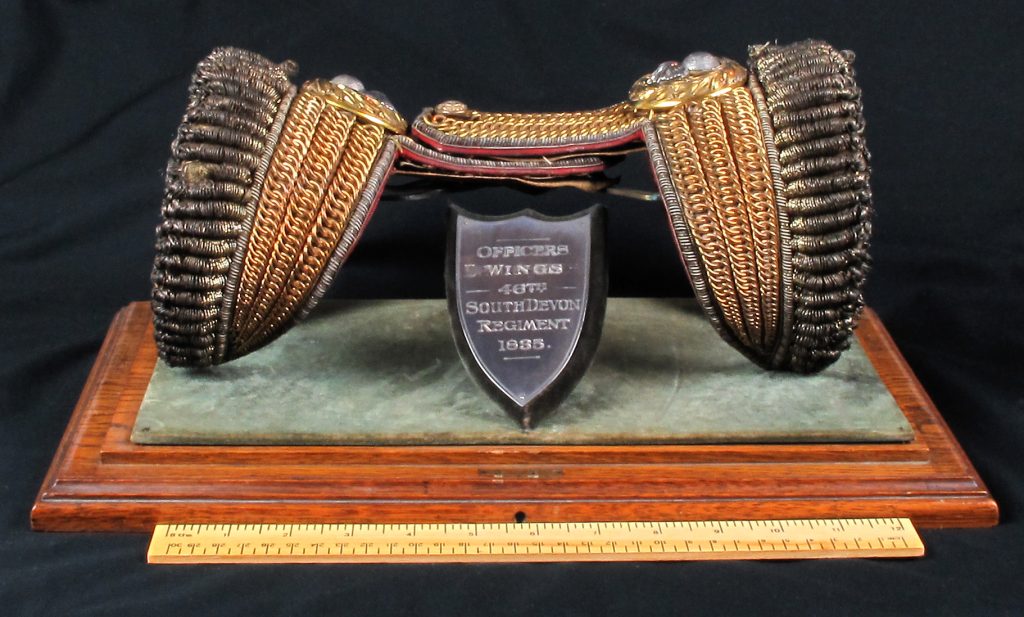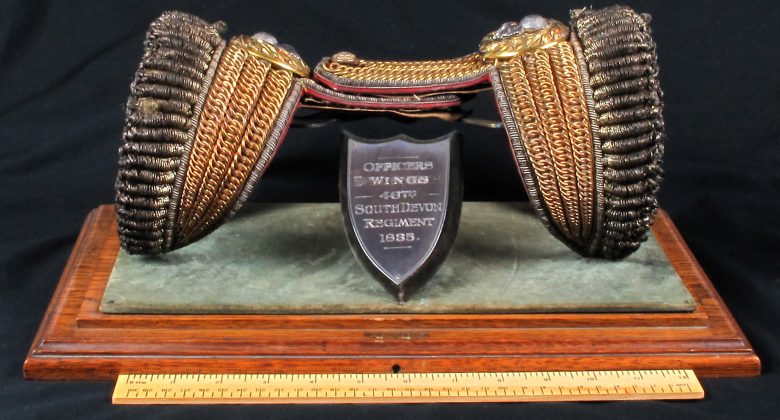Grenadiers were tough troops, armed with a bag of grenades, a hatchet, a firelock musket and bayonet. Their special role was to lead the assault on fortifications, hacking away any obstacle. It was a demanding task so the men were tall and strong.
The introduction of light companies was a recognition of the changing way of war. Men chosen for these companies were trained and equipped for skirmishing to protect the battalion ranks.
The Grenadier and Light Companies were considered the elite of the battalion, known as flank companies and paraded on the right and left flanks respectively. On parade the Grenadier Company took up position on the right of the line and the Light Company on the left with the Battalion Company in the middle.

They were distinguished by the wearing of ‘ wings’ as opposed to epaulettes by the remainder. Grenadiers wore a flaming grenade on the strap of each wing, whilst Light Company men wore a bugle horn. Grenadiers were known as ‘Tow-Rows’, Light Company men as ‘Light Bobs’, and the Battalion Company men ‘Flat Foots’.
From a practical sense, as warfare changed so did uniforms. Gunpowder produced smoke clouds, so the British could wear red and not worry about being seen. When smokeless guns became common in the 1880s, bright colours made you a target. Dull colours like khaki or camouflage were much safer. In World War 1, trench warfare caused other practical changes. Wet and muddy conditions needed warm and waterproof uniforms like wellington boots. In general, military uniform has moved from glamorous to practical over time.
Bodmin Keep has a superb collection of uniforms and military headgear takes you through history from the late 18th century to the 20th century.
There are uniforms of the Cornwall volunteer regiments, the Duke of Cornwall’s Light Infantry, the Home Guard, and The Light Infantry. The collection includes dashing red jackets and distinctive headgear of the 18th and 19th centuries, the Khaki uniforms introduced in the 1890s, rare World War 1 kit, and modern camouflage.

